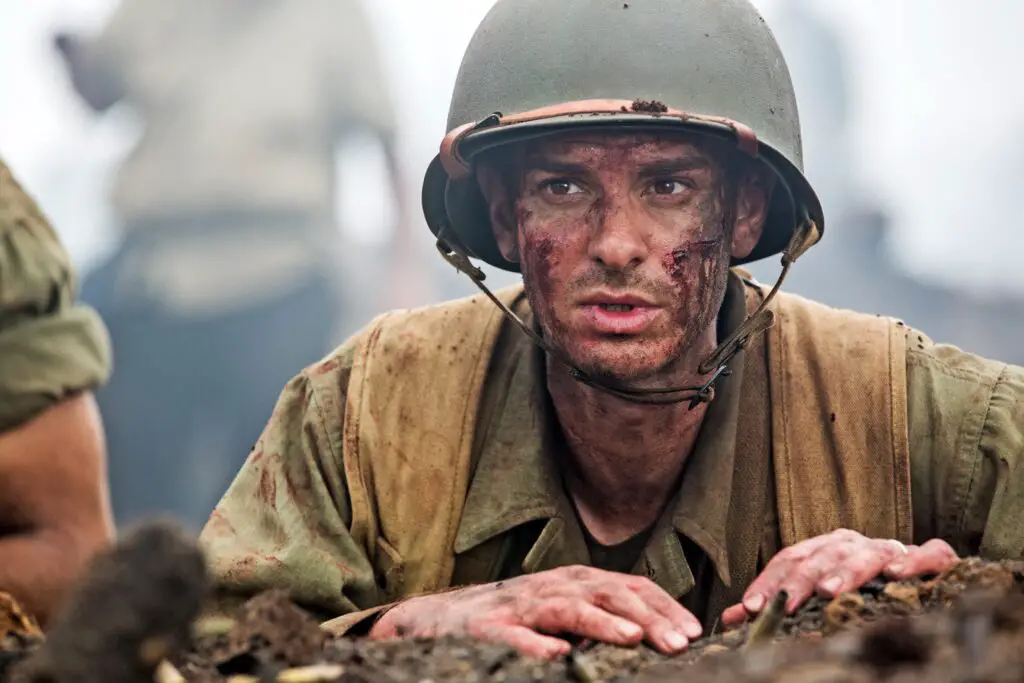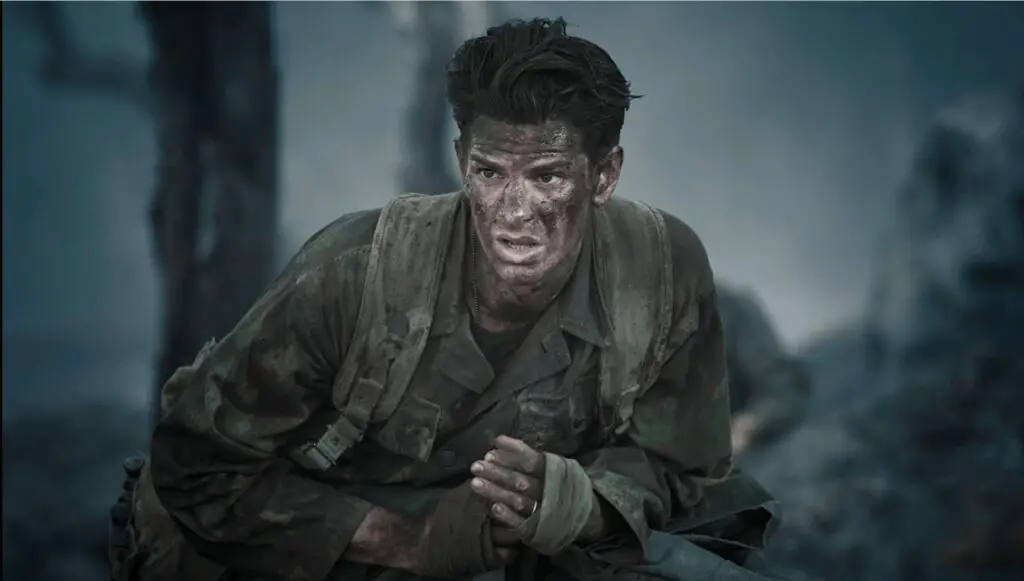“Hacksaw Ridge” unveils war in its rawest form, sketching the true calamities of bloodied visages and lifeless bodies. Contrasting the era’s nationalistic fervor, the film paints the brutal reality of combat. It underscores Desmond Doss’s fervent stance against violence, captured succinctly in his words: “while everybody else is taking lives, I’m going to be saving it.” The narrative pays homage to Doss’s real-life journey as a war medic, embodied compellingly by Andrew Garfield. Despite a few creative deviations by the duo – producer Bill Mechanic and director Mel Gibson – the film stays authentic to Doss’s wartime deeds and the grim visuals it’s acclaimed for.
Unraveling Desmond Doss’s Valorous Story

The movie recounts the narrative of Private Desmond Doss, who stepped onto the treacherous grounds of the Maeda escarpment in April 1945. With its sheer cliffs, the location earned the moniker, “Hacksaw Ridge“. This Battle of Okinawa, a duel between the US and Japan, was a mission where Doss and his unit faced almost insurmountable odds. Amidst the deathly maze of machine guns and booby traps, Doss showcased indomitable spirit. Even when his team was commanded to withdraw, he remained steadfast, venturing into the fiery onslaught to rescue his comrades. His recurring prayer, “Lord, please help me get one more,” became his strength. Estimates suggest Doss saved roughly 75 souls, a compromise between his claim of 50 and his team’s estimate of 100.
His exemplary services weren’t confined to Hacksaw Ridge; he had served as a medic in Guam and the Philippines. However, it was Hacksaw Ridge that immortalized him in history. He faced the added peril of being in the crosshairs of the Japanese, who often targeted medics. His gallantry did not shield him from injuries; he bore the scars of shrapnel and a broken arm. On October 12, 1945, Doss carved his name into history as the first conscientious objector to be bestowed with the Medal of Honor. His legacy didn’t only affect history; it deeply affected his family. Desmond Jr., his only son, revealed in an interview with People the lasting impact of war on their lives. He expressed his pride in his father’s valor, emphasizing the legacy Doss left behind.
Dissecting the Historical Accuracy of “Hacksaw Ridge”

While Doss was approached by numerous writers and filmmakers post his Medal of Honor accolade, he remained discerning, holding onto one key criterion: absolute truth. By the time “Hacksaw Ridge” premiered in 2016, a decade had passed since Doss’s demise. His son lauded the movie for its dedication to depicting the grim war realities and Doss’s core values. But like many biopics, the film took creative liberties, especially concerning Doss’s family and romantic life. Mechanic, addressing these choices, opined that strict adherence to facts might hamper crafting a compelling narrative. While the film tweaked some events and timelines for dramatic coherence, the crux of Doss’s beliefs and actions remained unaltered.
For instance, while the film captures a poignant moment between a young Doss, his mother, and father culminating in Doss snatching a gun from his father’s grasp, in reality, this altercation involved Doss’s uncle and father. Additionally, the film slightly adjusted the timeline of Doss’s marriage to Dorothy for cinematic impact. But, these cinematic alterations did not dilute the essence of Doss’s story.
Interestingly, Doss’s preferred title was a “conscientious cooperator” rather than a “conscientious objector” – a testament to his willingness to serve without wielding a weapon. This ideological stance invoked substantial ridicule and skepticism from his military peers, as depicted in the film. Much of this persecution is attributed in the film to a fictional character, Smitty. Although not historically accurate, Smitty represents the collective skepticism Doss faced.
In a nutshell, beyond the cinematic interpretations and storytelling licenses, “Hacksaw Ridge” stands as a testament to Desmond Doss’s unyielding faith and valor. It reminds us of the heroism of a man whose weapon was his unwavering belief and whose legacy continues to inspire generations.


